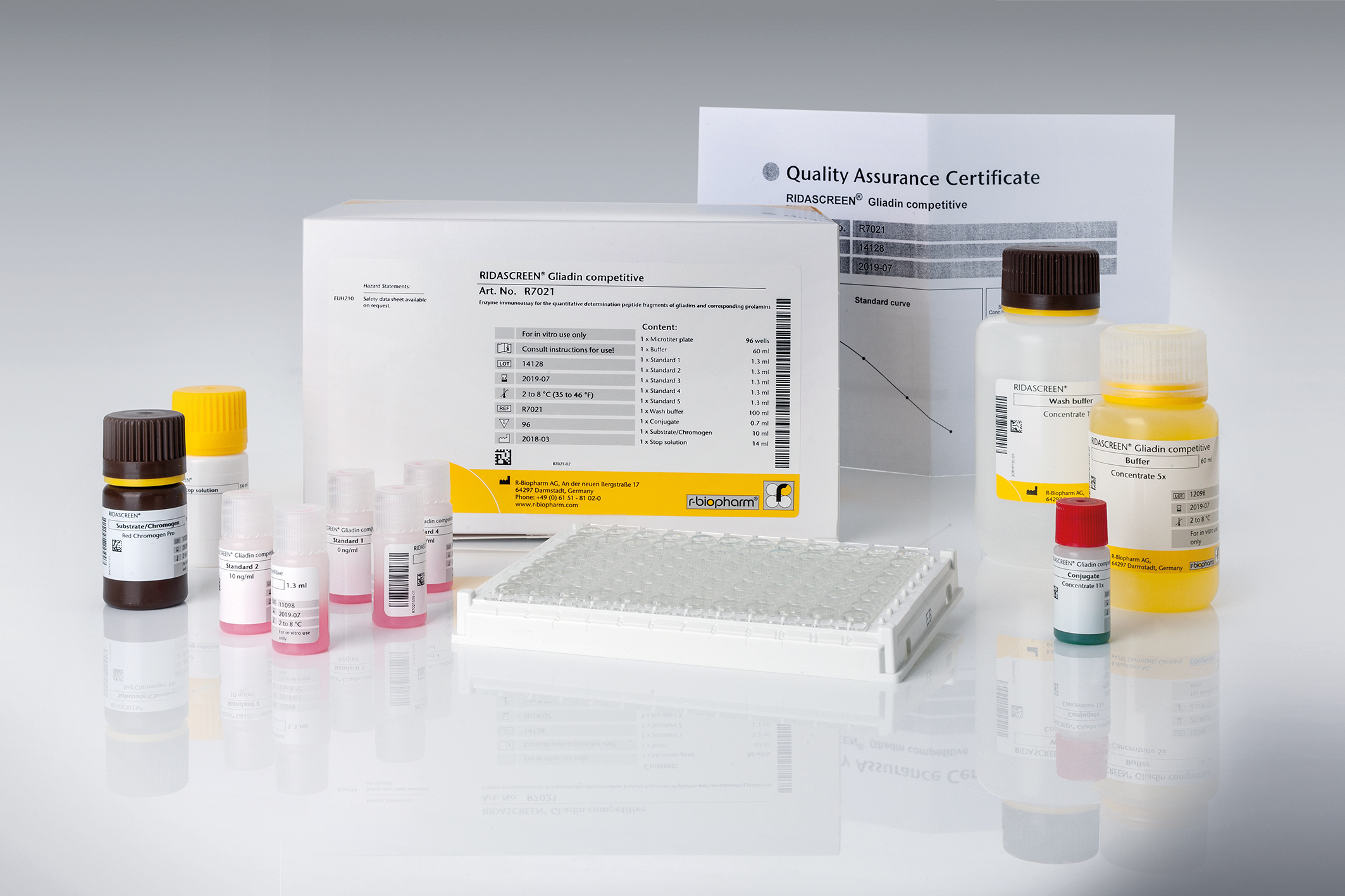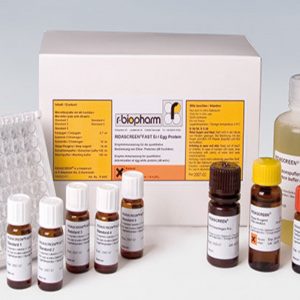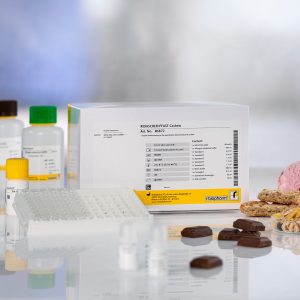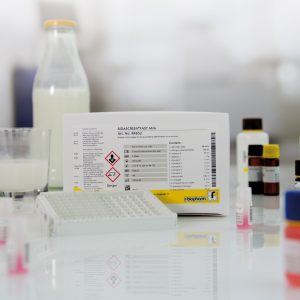Description
Intended use:
RIDASCREEN® Gliadin competitive is used for the analysis of fermented and hydrolyzed food (e.g. beer, starch syrup, starch, malt extract, sourdough, soy sauce) which are declared as “gluten-free”. The R5 monoclonal antibody recognizes potentially toxic peptide sequences of gliadins from wheat and related prolamins from rye and barley.
The competitive enzyme immunoassay quantitates peptide fragments of prolamins from wheat (gliadins), rye (secalin) and barley (hordein). The used R5 monoclonal antibody recognizes among others the potentially toxic sequence QQPFP, which occurs repeatedly in the prolamin molecules.
General Information:
The use of wheat flour and gluten in foodstuffs is extremely common because of their heat stability and useful effects on e.g. texture, moisture retention and flavour. Gluten is a mixture of prolamin and glutelin proteins present in wheat, rye and barley. Coeliac disease is a permanent intolerance to gluten that results in damage to the small intestine and is reversible when gluten is avoided by diet. According to the Codex Alimentarius (CODEX STAN 118/1979) two categories for labeling of food according to the gluten content now exist:
1.) “Glutenfree” = Food products, containing < 20 mg / kg Gluten
2.) “Very low gluten” = Food products containing 20 – 100 mg / kg Gluten
The threshold of 20 mg / kg has been adopted by many national legislations in many countries.
During food processing like e.g. fermentation or hydrolysis intact prolamin molecules are partly or completely degraded to small peptide fragments. For Coeliac patients these fragments still remain dangerous even after digestion in the stomach. Single, small peptide sequences (motifs) cannot be detected by a sandwich ELISA format, because at least two epitopes are necessary for a sandwich ELISA. However, single peptide fragments can be detected with a competitive format.
Approvals:
The ELISA RIDASCREEN® Gliadin competitive was evaluated by 18 labs in an international collaborative study (AACCI and WGPAT) for beer, starch syrup and sourdough. The competitive ELISA is an AACC international approved method (38-55.01) and an AOAC approved Official Method of Analysis (Final Action OMA 2015.05). In a second international collaborative study (ASBC) RIDASCREEN® Gliadin competitive was evaluated by 15 labs for 5 different beers. The competitive ELISA is an ASBC international approved method (Beer-49).
In addition, the RIDASCREEN® Gliadin competitive is approved by AOECS (Standard R5 ELISA for hydrolyzed food), MEBAK (Method 2.6.5 beer analysis) and TTB (ruling number 2012-2 for beer).
Statement with respect to the FDA final rule on gluten free products:
On August 12, 2020 the FDA issued the final rule related to gluten free labeling for foods containing fermented, hydrolyzed ingredients. Please find our statement with respect to this final rule in this document.
Watch our video tutorials for sample preparation and test procedure with RIDASCREEN® Gliadin competitive:
- Gluten Analysis Sample Preparation with Ethanol
- Gluten Analysis Test Procedure for the competitive ELISA RIDASCREEN Gliadin competitive
Accessories:
Certificates:
- AOAC Official First Action Method – OMA 2015.05
- AACCI – Approved Method 38-55.01
- ASBC Methods of Analysis – Beer-49
| Article Numbers | R7021 |
|---|---|
| Test format | Microtiter plate with 96 wells (12 strips with 8 removable wells each) |
| Sample preparation | Homogenization and extraction |
| Incubation time | 40 min Room temperature |
| LOD (Detection limit) | 2.3 mg / kg (ppm) Gliadin (mean) or to 4.6 mg / kg (ppm) Gluten 1.9 – 2.6 mg / kg (ppm) Gliadin* *depending on matrix |
| LOQ (Limit of quantification) | 5 mg / kg (ppm) Gliadin or 10 mg / kg (ppm) Gluten |
| Validated matrices | Beer, starch syrup, starch, malt extract, sourdough, soy sauce. |
| Available application notes |
|
| Detected analyte |
|
| Evaluation | Microtiter plate spectrophotometer (450 nm) |
| Instructions | |
|---|---|
| MSDS |




